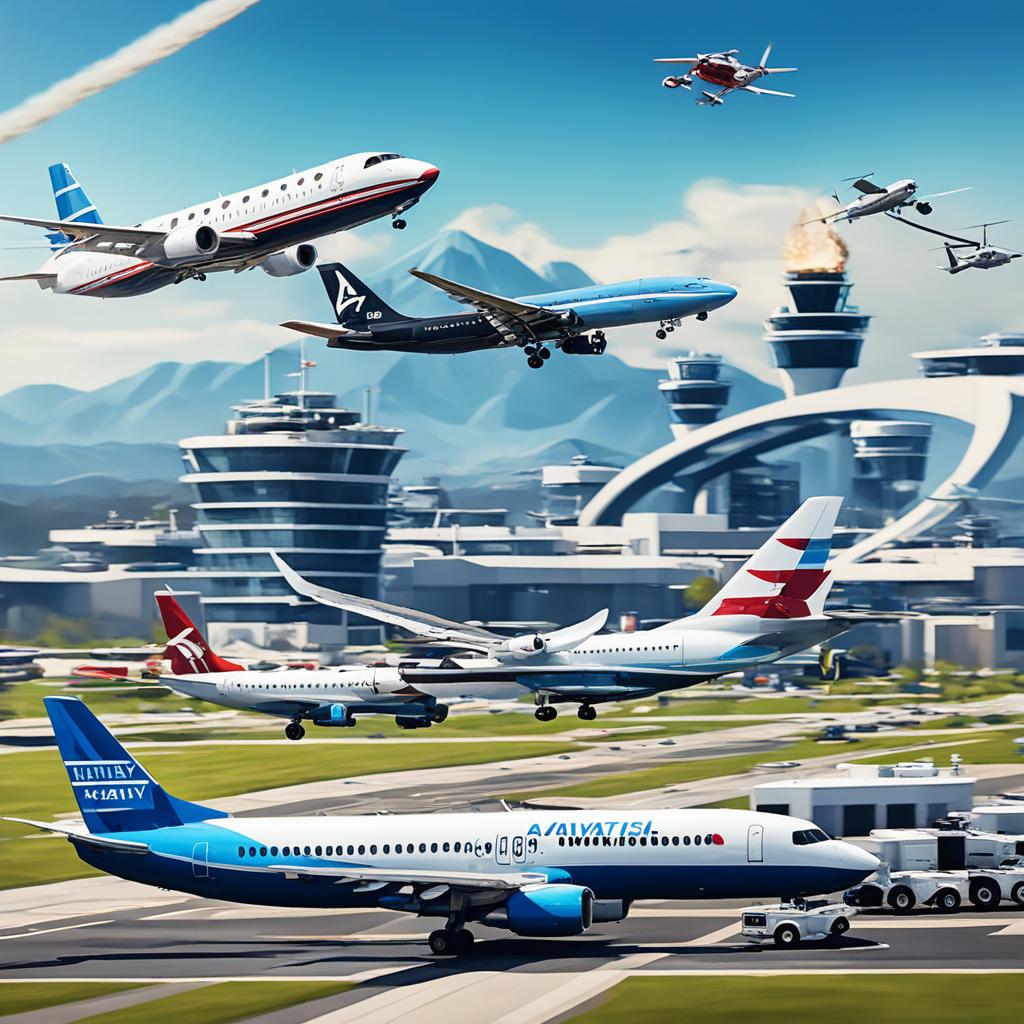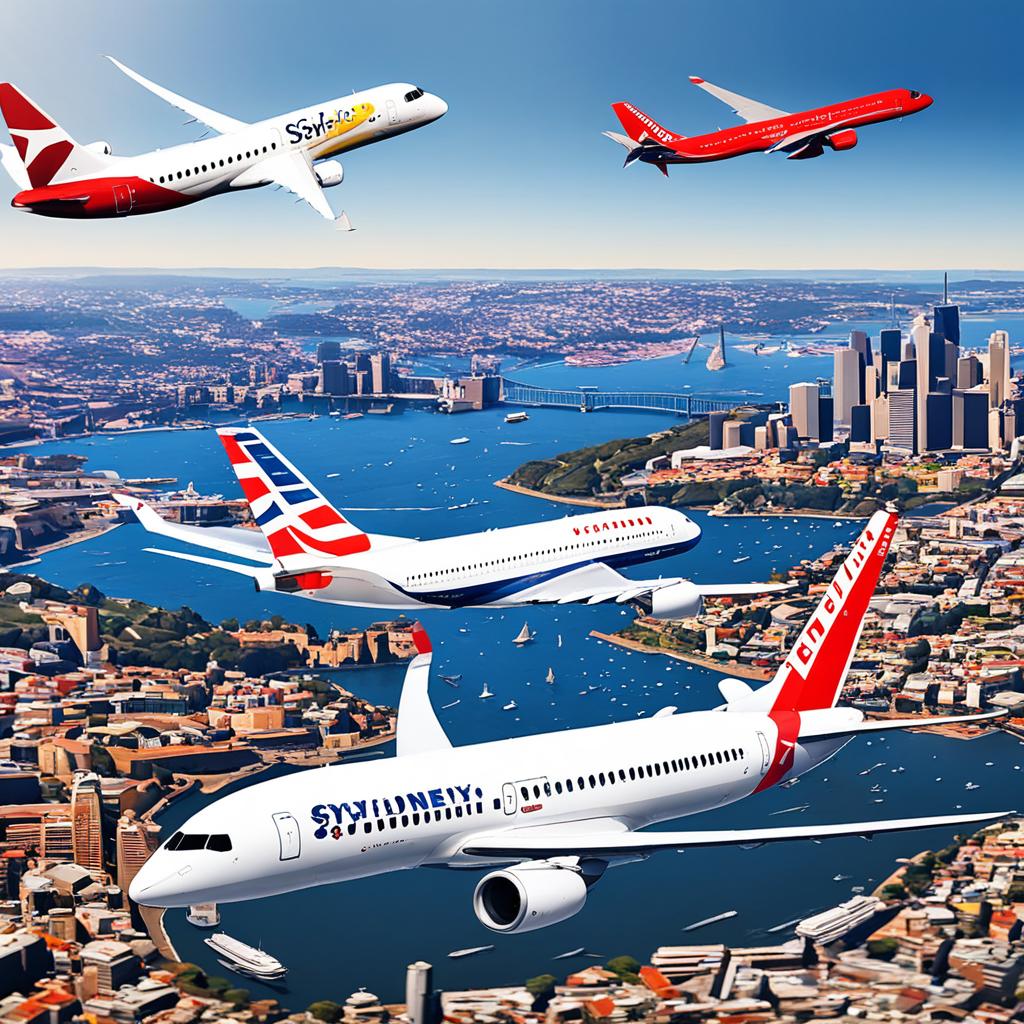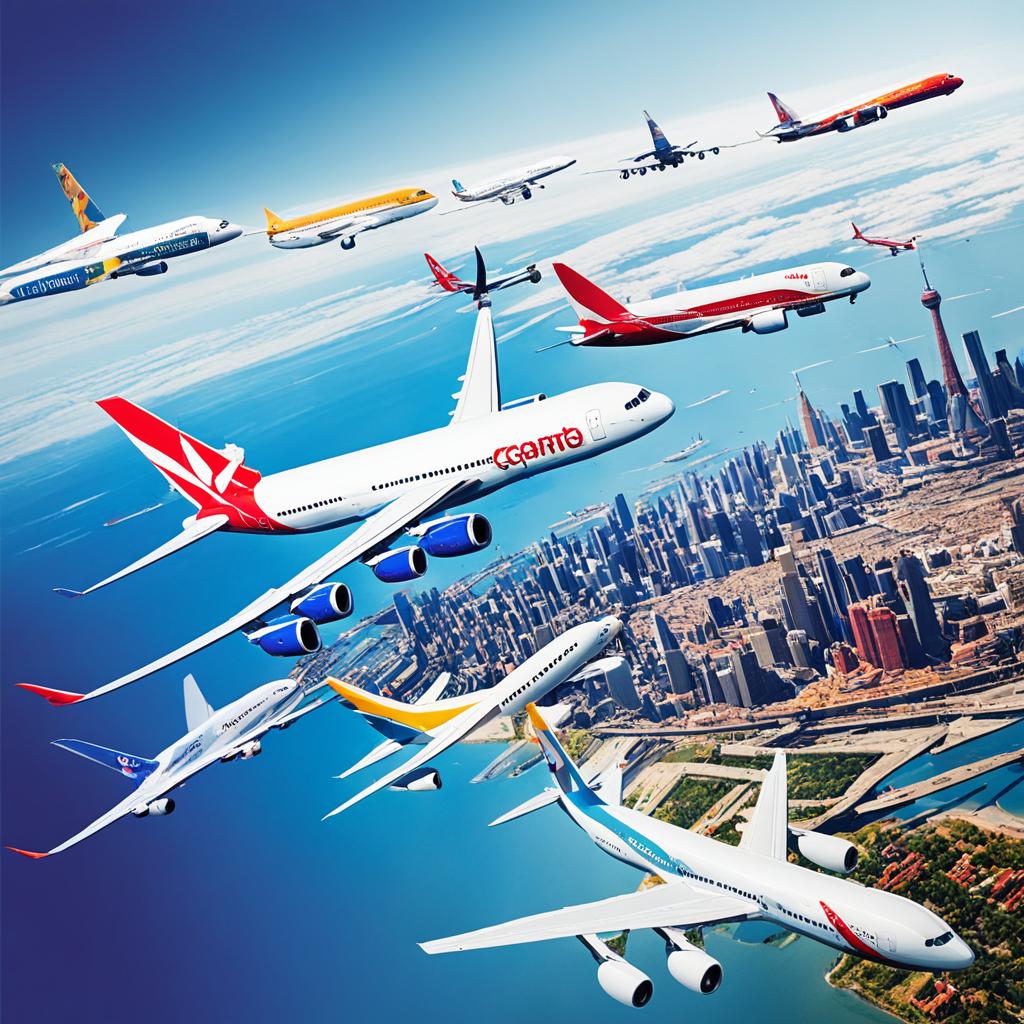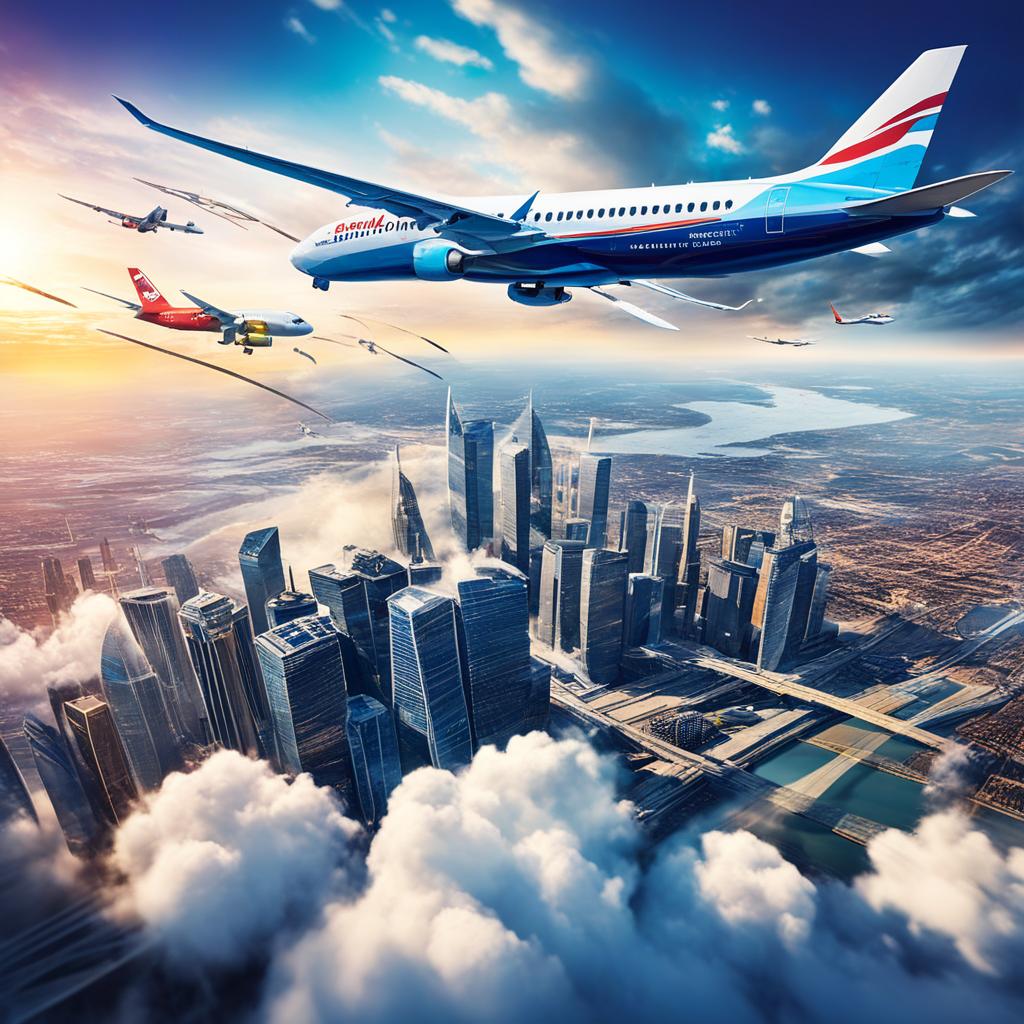Have you ever wondered about the inner workings of the airline industry? From transporting millions of passengers to delivering goods across the globe, the airline industry plays a vital role in the aviation sector and the wider travel industry. But what exactly defines this industry?
The airline industry can be broadly defined as companies that provide regular air transportation services for passengers or goods. It encompasses various types of airlines, such as international, national, and regional carriers. American Airlines, Delta Air Lines, and United Airlines are just a few examples of the major airline companies that operate within this industry.
With different business models, including full-service carriers, low-cost carriers, charter airlines, and cargo airlines, the airline industry is key to global connectivity. It enables tourism, trade, and economic growth, while also offering diverse career opportunities for individuals hoping to join the ranks of pilots, flight attendants, and ground crew members.
So, are you ready to dive deeper into the captivating world of the airline industry? Let’s explore the different types of airlines, the distinction between the airline industry and the aviation industry, and the biggest players in this ever-evolving sector.
What is the Difference Between the Airline Industry and the Aviation Industry?

The airline industry and the aviation industry are often used interchangeably, but they refer to different aspects. The airline industry specifically focuses on companies that provide air transportation services to customers. It revolves around the operation of scheduled flights for passengers and cargo.
On the other hand, the aviation industry encompasses a broader range of activities related to aviation, including aircraft manufacturing, research, and non-commercial flights. While the airline industry primarily focuses on transportation services, the aviation industry includes various sectors like aerospace companies, air traffic control, and aircraft maintenance.
What are the Different Types of Airlines?

Airlines can be categorized into different types based on their operations. These types include international airlines, national airlines, and regional airlines.
International airlines are the largest and most high-profile airlines that operate globally, offering services for long-distance travel. These airlines connect different countries and continents, providing extensive routes and destinations for travelers around the world. International airlines often have a large fleet of aircraft and offer a wide array of amenities and services to enhance the passenger experience.
National airlines primarily focus on domestic travel within a specific country. These airlines cater to the needs of passengers traveling within their own country, offering convenient connections between major cities and regions. National airlines may also provide international services, connecting their home country with other destinations around the world.
Regional airlines specialize in serving specific regions where demand for air travel is lower or where major airlines do not operate. These airlines focus on providing flights within a particular geographic area, serving smaller airports and connecting passengers to larger hubs. Regional airlines often function as affiliates of larger airlines, providing connection flights to their main hubs.
Examples of International Airlines:
1. Delta Air Lines
2. American Airlines
These internationally recognized airlines have established themselves as leaders in the industry, offering a wide range of services and destinations to travelers worldwide.
| Type of Airline | Key Characteristics | ||
|---|---|---|---|
| International Airlines | – Operate globally | – Offer long-distance travel services | – Extensive routes and destinations |
| National Airlines | – Focus on domestic travel | – Provide connections within a specific country | – May offer international services |
| Regional Airlines | – Serve specific regions | – Connect smaller airports | – Affiliates of larger airlines |
These different types of airlines cater to the diverse needs of travelers, ensuring convenient connectivity and a variety of travel options.
The Biggest Airline Companies in the World

When it comes to the airline industry, some companies stand out as the biggest players on the global stage. These companies not only dominate the market but also contribute significantly to the industry’s growth and global connectivity. Let’s take a closer look at the three biggest airline companies in the world:
American Airlines
American Airlines takes the top spot as the largest airline company globally. With an extensive network and a fleet size that surpasses its competitors, American Airlines operates both domestically and internationally, serving millions of passengers each year. Its revenue passenger kilometers (RPKs), which measure the total distance flown by paying passengers, further solidify its position as a leader in the industry.
Delta Air Lines
Following closely behind, Delta Air Lines ranks as the second-largest airline company in the world. Known for its operational scale and extensive network, Delta Air Lines operates flights to various destinations across the globe. The airline’s fleet size and commitment to superior customer service have earned it a loyal following among travelers.
United Airlines
United Airlines secures the third position among the biggest airline companies globally. Operating a large fleet of Boeing and Airbus aircraft, United Airlines connects passengers to destinations around the world. The company’s dedication to innovation, customer satisfaction, and strategic partnerships contribute to its success in the highly competitive airline industry.
In conclusion, American Airlines, Delta Air Lines, and United Airlines are the major players in the airline industry. While American Airlines holds the top position, Delta Air Lines and United Airlines closely follow, showcasing their operational scale, extensive networks, and commitment to providing exceptional service to passengers worldwide.
Careers in Airline Hospitality in the Aviation Industry
Hospitality is an essential aspect of the airline industry and plays a crucial role in providing quality service to customers. Whether you’re flying for business or pleasure, the hospitality offered by airline professionals ensures a pleasant and comfortable journey.
Within the aviation industry, hospitality encompasses a variety of roles aimed at ensuring customer satisfaction. From warmly greeting and assisting passengers to relaying important information, airline professionals in hospitality strive to create a positive and memorable experience for travelers throughout their journey.
There are different types of airline hospitality, catering to the diverse needs of passengers. Personal hospitality is dedicated to serving customers traveling on commercial flights, while business hospitality focuses on taking care of premium-class passengers. Additionally, private hospitality is provided for individuals traveling on private air transportation. These different categories of hospitality require professionals who are adept at providing personalized and attentive service.
Jobs in airline hospitality span a range of roles, including flight attendants, customer service representatives, hospitality managers, and marketers. If you are interested in pursuing a career in this field, there are various paths you can take. You can study hospitality management to gain the necessary knowledge and skills, or you can start from entry-level positions and work your way up through practical experience and on-the-job training.
Strong communication skills, problem-solving abilities, and a customer-centric mindset are essential for success in the airline hospitality industry. By combining these skills with a passion for providing exceptional service, you can embark on a rewarding career in the exciting world of the airline and aviation industry.
FAQ
Q: What is the nature of the airline industry?
A: The airline industry can be defined as companies that provide regular air transportation services for passengers or goods. It is a sub-sector of the aviation sector and the wider travel industry. The airline industry encompasses various types of airlines, including international, national, and regional airlines. It also includes major airline companies such as American Airlines, Delta Air Lines, and United Airlines. The industry operates on different business models, including full-service carriers, low-cost carriers, charter airlines, and cargo airlines. The airline industry is essential for global connectivity, supporting tourism, trade, and economic growth. It offers a wide range of career opportunities in areas like pilot, flight attendant, and ground crew positions.
Q: What is the Difference Between the Airline Industry and the Aviation Industry?
A: The airline industry and the aviation industry are often used interchangeably, but they refer to different aspects. The airline industry specifically focuses on companies that provide air transportation services to customers. It revolves around the operation of scheduled flights for passengers and cargo. On the other hand, the aviation industry encompasses a broader range of activities related to aviation, including aircraft manufacturing, research, and non-commercial flights. While the airline industry primarily focuses on transportation services, the aviation industry includes various sectors like aerospace companies, air traffic control, and aircraft maintenance.
Q: What are the Different Types of Airlines?
A: Airlines can be categorized into different types based on their operations. International airlines are the largest and most high-profile airlines that operate globally, offering services for long-distance travel. National airlines primarily focus on domestic travel within a specific country, but they may also provide international services. Regional airlines specialize in serving specific regions where demand for air travel is lower or where major airlines do not operate. They often function as affiliates of larger airlines, providing connection flights to their main hubs. Examples of international airlines include Delta Air Lines and American Airlines.
Q: What are the Biggest Airline Companies in the World?
A: The biggest airline companies in the world can be identified based on metrics such as revenue passenger kilometers (RPKs), which measure the total distance flown by paying passengers. American Airlines is currently the largest airline company globally in terms of RPKs, fleet size, total passengers, and destinations served. Delta Air Lines ranks as the second-largest airline company and is known for its extensive network, operational scale, and fleet size. United Airlines holds the third position and operates a large fleet of Boeing and Airbus aircraft. These companies play a crucial role in the airline industry and contribute significantly to global connectivity.
Q: What are the Careers in Airline Hospitality in the Aviation Industry?
A: Hospitality is an essential aspect of the airline industry and plays a crucial role in providing quality service to customers. Within the aviation industry, hospitality involves various roles such as greeting and assisting passengers, relaying information, and ensuring comfort and satisfaction throughout the journey. Different types of airline hospitality include personal hospitality for commercial air travel, business hospitality for premium-class passengers, and private hospitality for private air travel. Jobs in airline hospitality range from flight attendants and customer service representatives to hospitality managers and marketers. To pursue a career in airline hospitality, individuals can study hospitality management, gain practical experience through internships, or start from entry-level roles and work their way up. Strong communication skills, problem-solving abilities, and a customer-centric mindset are essential for success in this field.
